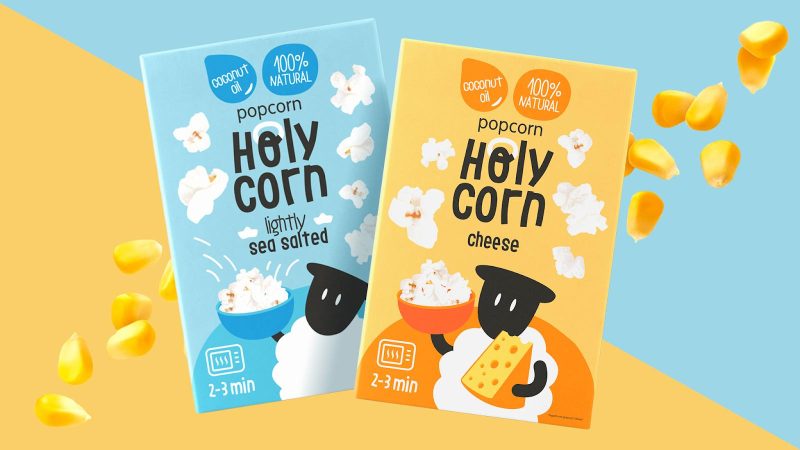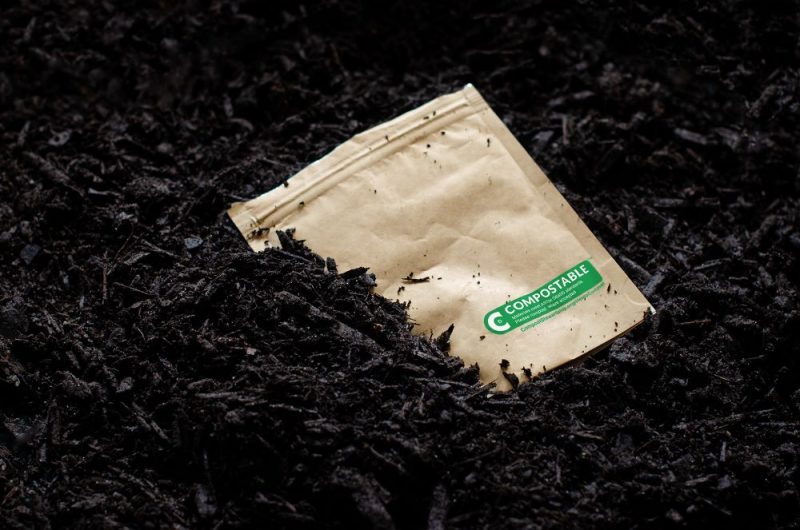
For popcorn, the protective function of packaging is paramount, directly impacting product quality and texture. Popcorn is highly susceptible to environmental factors, making packaging with excellent protective properties crucial for maintaining its quality.
From a moisture-proof perspective, popcorn is extremely sensitive to humidity. Once exposed to moisture, it quickly loses its signature crispiness, becoming soft and unpalatable. To address this, many popcorn packages use moisture-resistant materials like polyethylene (PE) film, which offers excellent water vapor barrier properties to effectively block external humidity and keep popcorn in a dry environment. Some premium popcorn packages even incorporate special moisture-proof coatings on the inner layer, acting like a “moisture-proof armor” for the popcorn.
Regarding oxidation prevention, oxygen is a “hidden enemy” of popcorn. Prolonged exposure to oxygen causes the oils in popcorn to oxidize, resulting in a rancid taste that not only affects flavor but also reduces nutritional value. To combat oxidation, many packages use high-barrier materials like aluminum foil, which has an extremely low oxygen transmission rate, significantly slowing the oxidation process. Some packages are also filled with inert gases like nitrogen to displace oxygen, creating a low- or no-oxygen environment to preserve popcorn’s freshness for longer.
The crisp and fragile nature of popcorn demands packaging with sufficient crush resistance. During transportation and storage, popcorn is prone to breaking under pressure. Structural design is critical to solving this issue. For example, bucket-style packaging made from thick cardboard provides a sturdy protective shell, effectively distributing external pressure to prevent popcorn from being crushed. Some packages also include internal cushioning materials, such as foam pads or air column bags, to further reduce damage from vibrations and impacts during transit.
Visual Appeal
In today’s competitive consumer market, a popcorn product needs visually appealing packaging to capture attention. From color choices and pattern designs to the shape of the packaging, every element acts like a stroke of an artist’s brush, collectively creating a unique and captivating product image.
Color, one of the most impactful elements in packaging design, deeply influences consumers’ emotions and purchasing decisions. For classic caramel popcorn, packaging often features brown tones, naturally evoking the rich, sweet, and indulgent flavor of caramel, instantly sparking appetite. For fruit-flavored popcorn, like strawberry, vibrant red packaging is a popular choice, symbolizing passion and energy while conveying the sweet essence of strawberries. Strategic use of contrasting or complementary colors can make packaging stand out. For instance, pairing yellow with purple creates a bold contrast that grabs attention amidst a sea of products, while softer analogous colors, like light blue and green, create a fresh, calming vibe that feels comfortable and inviting.
Patterns and illustrations serve as storytelling elements on packaging, giving products depth and distinct personality. Take Russia’s HolyCorn! brand, for example, with packaging designed by Openmint Studio. Its playful “baby popcorn” series uses Pantone-standard colors and charming imagery to highlight health-focused selling points like gluten-free, non-GMO, and coconut oil preparation. Each flavor uses unique patterns and colors to convey distinct moods, instantly communicating the product’s unique charm. Another example is PopcornPopcorn, designed by Greek designer Anna Trympali, featuring quirky, humorous illustrations that vary in background and dynamism based on flavor, adding fun and individuality that delights consumers while they enjoy their snack.
The shape of the packaging is also a key factor in visual appeal, as unique shapes help products stand out on shelves. Garrett Popcorn’s packaging is a prime example, with its polygonal cone-shaped design that not only sits stably on tables or shelves but also suits corporate events, weddings, and other occasions. Before opening, it resembles a delicate bouquet, offering a striking and memorable visual experience. Some popcorn packages are even designed as animal shapes, like cute bears or lively rabbits, attracting kids while sparking a sense of childlike joy in adults, significantly boosting the product’s appeal and recognizability.
Convenience Design
In daily life, we often encounter frustrating scenarios: eagerly wanting to enjoy popcorn but struggling with hard-to-open packaging, or finding traditional popcorn packaging bulky and inconvenient to carry on the go. These issues stem from inadequate convenience design. In today’s fast-paced world, consumers increasingly demand convenient packaging. A well-designed, user-friendly popcorn package not only enhances the eating experience but also helps brands stand out in a competitive market.
From an easy-open perspective, traditional popcorn packaging often requires effort to open, sometimes even needing tools. Modern designs have addressed this with user-friendly features. For instance, some packages include tear-notch designs for quick, effortless opening, eliminating frustration. Others use press-to-close or zipper-style seals, which are easy to open and allow resealing to keep remaining popcorn fresh and crisp.
For portability, Garrett Popcorn’s polygonal cone-shaped packaging shines. Its aesthetically pleasing design is also practical, making it easy to carry and place. Whether at corporate events, where it can sit on conference tables, or at weddings as a chic dessert table addition, it solves the inconvenience of traditional packaging. Additionally, some popcorn packages come in compact, lightweight formats like small bags or mini cans, perfect for slipping into pockets or bags for on-the-go snacking. These designs are not only portable but also help control portion sizes.
Storage convenience is another critical aspect. Foldable popcorn packaging excels here, as it can be collapsed after use, taking up minimal space for easy storage. Resealable designs, like zipper-sealed bags, extend popcorn’s freshness, allowing consumers to enjoy the same crisp texture during subsequent servings without worrying about moisture spoilage.
Environmental Considerations
In today’s world, environmental concerns are a global focus, and the popcorn industry is no exception. As consumers grow more eco-conscious, their expectations for sustainable packaging rise. Adopting eco-friendly materials and design principles is not only a response to market trends but also a vital step for businesses to fulfill social responsibilities and achieve sustainable development.
Biodegradable and recyclable materials are increasingly common in popcorn packaging. Paper, with its renewable and degradable properties, is a top choice for many brands. Paper buckets, a newer packaging option, offer unique advantages. Made from renewable resources like wood fiber, they generate less pollution during production and use and are easily recyclable. Compared to traditional plastic buckets, paper buckets have a clear environmental edge, reducing ecological impact. While glass packaging is recyclable, its weight increases transportation costs, and its fragility poses safety risks. Paper buckets, as a green alternative, align better with sustainability goals.
In practice, paper buckets are designed with sufficient strength and rigidity to protect popcorn from external impacts and pressure. Their waterproof inner layer prevents moisture infiltration, keeping popcorn dry and fresh. Additionally, paper buckets offer excellent sealing to block air and bacteria, extending shelf life. These qualities make paper buckets both environmentally friendly and effective at preserving popcorn quality.
Beyond material choices, reducing material usage is a key environmental strategy. Minimalist packaging embraces simple designs, eliminating unnecessary embellishments and complex structures while meeting basic functional needs. This approach not only supports environmental goals but also lowers production costs, achieving both ecological and economic benefits.
Recyclable packaging structures are also noteworthy. Some popcorn packages feature foldable or detachable designs, allowing them to be collapsed or disassembled after use for easy storage, reducing space waste. These can be reused multiple times, improving resource efficiency. Others are designed for multifunctionality, such as transforming into storage boxes after use, promoting secondary use and further embodying eco-friendly principles.

Popcorn Packaging Partner
Colorful Packaging maintains strict standards in material selection, whether it’s moisture-resistant polyethylene film, high-barrier aluminum foil, or eco-friendly paper, ensuring top-quality results. Their design team, composed of creative talent, deeply understands market trends and consumer psychology, crafting visually captivating packaging tailored to each popcorn brand’s positioning and target audience. From color coordination to pattern creation, shape conceptualization to structural design, every detail is meticulously crafted to make each package stand out in the market.
In production, Colorful Packaging employs advanced technology and equipment to ensure precision and quality consistency. Whether it’s easy-open features or resealable structures, their skilled craftsmanship brings designs to life. The company also prioritizes sustainability, actively using biodegradable and recyclable materials to contribute to the industry’s eco-friendly evolution.
